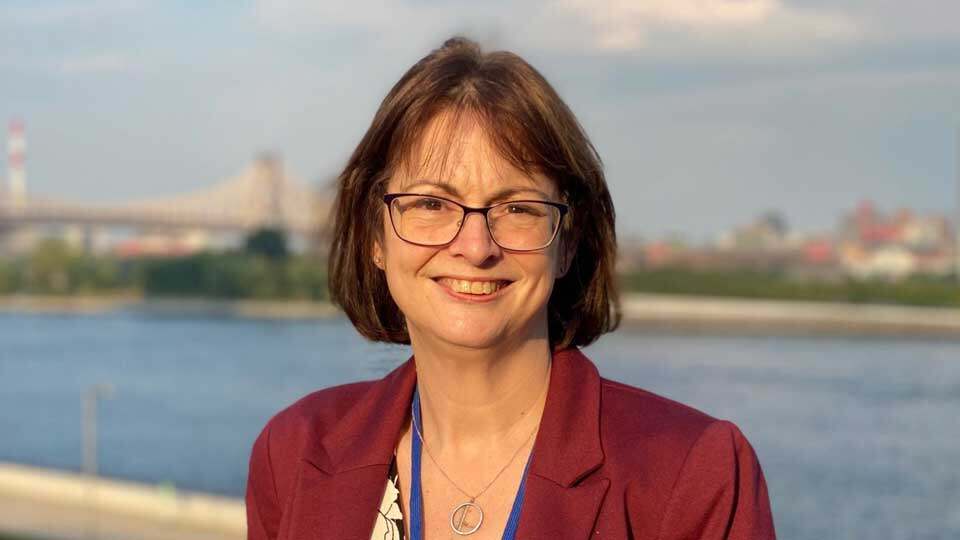Fresh back from the United Nations in New York, Professor Joanna Mossop is buzzing, having experienced something very few academics get to—participating in the creation of a new treaty in her specialist area of the Law of the Sea.


“It’s not often for an international lawyer that you get a major new treaty in your area. There’s a lot of intellectual energy going on, studying this treaty around the world. There’s been a lot of excitement, but also recognition that we’ve still got a lot of hard work to do,” says Professor Mossop, from Te Kauhanganui Tātai Ture—Faculty of Law, at Te Herenga Waka—Victoria University of Wellington.
The ‘Agreement on the Conservation and Sustainable Use of Marine Biodiversity in Areas Beyond National Jurisdiction’, sometimes known as the BBNJ (Biodiversity Beyond National Jurisdictions) agreement, provides a legal framework for dealing with the parts of the ocean outside national boundaries—around two-thirds of the world’s oceans.
The Treaty has been agreed in principle, though not yet adopted, by the nations of the world. It’s currently in the process of being translated into the six languages of the UN, and after that it will be adopted, then go out to be ratified. Once it is ratified by 60 countries, the Treaty will come into force, and be implemented. “This may take up to five years—but could take as little as a year, depending on how eager countries are to sign up and the time taken to satisfy their domestic processes,” says Professor Mossop.
“What I am most excited about the Treaty are the provisions on marine protected areas and area-based management tools. This has the potential to bring together organisations for different activities, such as fishing, mining, and shipping, and talk about what is necessary to protect a particularly sensitive area.”
The Treaty has been the work of hundreds of negotiators for a very long time—it has been 17 years since the initial ad hoc working group came together to decide whether or not it was necessary to have a Treaty, says Professor Mossop. “Then there was a General Assembly resolution on Christmas Eve 2017 to establish the Intergovernmental Conference, and since then there have been six two-week-long meetings negotiating the final language in the Treaty.”
The two weeks of the final meeting were hectic, and the final 36 hours were non-stop, says Professor Mossop. The five issues being negotiated concerned marine genetic resources, including sharing the benefits; area-based management tools, including marine protected areas; environmental impact assessments; capacity-building and the transfer of marine technology; and cross-cutting issues, including the establishment of institutions, a funding mechanism and dispute settlement.
“There was a lot of work to do in the last two weeks. I was following cross-cutting issues, which included what institutions we would have, what principles would be in the Treaty, general provisions, and dispute settlement—my particular interest area. I was supporting the head of the New Zealand delegation, as an independent academic adviser, to facilitate discussions about dispute settlement,” says Professor Mossop.
From attending the first two ad hoc meeting groups, to attending all but one of the Intergovernmental Conferences, Professor Mossop has been across negotiations throughout the development of the Treaty. While she was the Law of the Sea expert, there were also experts from the Department of Conservation, and Ministry for Primary Industries.
“New Zealand had the ability to be not as positional on some contentious issues, and the country was pushing mainly for a strong treaty that improved environmental governance as part of the ‘high ambition group’, which included the EU and a number of developing countries.
Once the Treaty is implemented, proposals for marine protected areas on the high seas will go to a regular Conference of the Parties (COP). “The COP will have a secretariat with a scientific and technical body, and mechanisms and committees to help with the implementation of the Treaty. This is a game changer for improving the environmental management of the high seas.”
Professor Mossop is now enjoying the academic activity that has arisen from the negotiations of this new Treaty. She is working on a book project providing a commentary and perspectives onf the Treaty, and her work around it is feeding into her current Marsden project on reimagining ocean law.
Her work on the Treaty will be reflected in her teaching. “When I talk about this Treaty in my classes in the future, I’m going to be able to say ‘I was there.’ When they are trying to work out why this word was used instead of that, I can give them that insight. They are studying a developing part of law, one essential to the sustainability of the planet.”








































